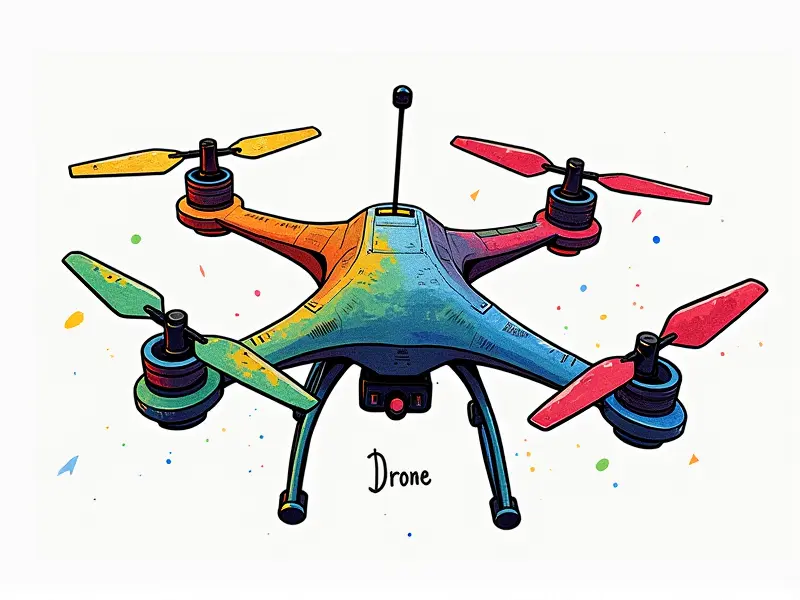FPV drone race track design

Designing the Perfect FPV Drone Race Track
FPV (First Person View) drone racing is an exhilarating sport that combines high-speed flying, precision maneuvers, and intense competition. To create an engaging and challenging race track for FPV drones, you need to carefully consider several key elements. This article will guide you through the process of designing a top-notch FPV drone race course.
Top Tips for Building an FPV Racing Course
- Layout Planning: Start by mapping out your course on paper or using digital tools to ensure it meets all necessary requirements.
- Course Length and Width: Optimize the length and width of your track for maximum excitement while maintaining safety standards.
- Obstacle Placement: Strategically place obstacles like cones, flags, or natural terrain features to create challenging turns and straights.
Essential Elements for an FPV Drone Race Course
- Safety Zones: Designate areas where drones can safely land in case of emergencies.
- Start/Finish Line: Clearly mark the start and finish line with bright, visible markers.
- Signage: Use clear signage to guide pilots through the course layout and rules.
Maximizing Speed in Your FPV Drone Race Track
To maximize speed on your race track, consider these factors:
- Straightaways: Include long straight sections to allow drones to reach their top speeds.
- Tight Turns: Incorporate sharp turns that test the pilot's skill and reaction time.
- Elevation Changes: Utilize hills, valleys, or other elevation changes for added excitement.
Crafting a Killer FPV Drone Race Course
A killer FPV drone race course should be challenging yet fair. Here’s how to achieve that balance:
- Course Complexity: Mix up the terrain with different types of turns, jumps, and obstacles.
- Variety in Flight Patterns: Encourage pilots to use a range of flight techniques such as rolls, loops, and barrel rolls.
- Spectator Experience: Design your course so spectators can easily follow the action from multiple vantage points.
Creating Thrilling FPV Drone Race Tracks
To create thrilling FPV drone race tracks, focus on these aspects:
- Incorporate Natural Features: Use existing natural terrain like trees, hills, and water bodies to enhance the course.
- Lights and Markers: Illuminate key sections of the track with colored lights or reflective markers for visibility.
- Variety in Obstacles: Introduce a mix of obstacles such as foam walls, inflatable barriers, and ground-level hazards.
How to Build a Killer FPV Drone Race Course
Building a killer FPV drone race course involves several steps:
- Pilot Consultation: Gather feedback from experienced pilots to refine the design.
- Safety Checks: Conduct thorough safety checks on all equipment and track features before opening the course.
- Ongoing Maintenance: Regularly inspect and maintain your race track to ensure it remains safe and challenging.
FPV Drone Racing: Track Design Essentials
The following are essential elements for designing an FPV drone racing track:
- Pilot Comfort: Ensure that the course layout accommodates different skill levels and flying styles.
- Course Accessibility: Make sure the race track is accessible to pilots of all ages and abilities.
- Sustainability: Design your course with sustainability in mind, minimizing environmental impact.
Optimizing FPV Drone Tracks for Speed and Fun
To optimize your FPV drone tracks for both speed and fun, focus on these design elements:
- Speed Zones: Create dedicated areas where drones can reach their maximum speeds without compromising safety.
- Fun Factor: Incorporate elements that make the race more enjoyable for pilots and spectators alike.
- Versatility: Design your track so it can be adapted for different types of FPV drones and racing events.
The Ultimate Guide to FPV Drone Race Track Planning
This ultimate guide covers all aspects of planning an FPV drone race track, from initial design concepts to final implementation:
- Initial Conceptualization: Begin by conceptualizing your ideal race course layout and features.
- Site Selection: Choose a location that offers the best terrain for racing while meeting safety requirements.
- Design Implementation: Convert your design concepts into a detailed plan, including measurements and materials needed.
Crafting the Best FPV Drone Racing Environment
To craft the best FPV drone racing environment:
- Pilot Engagement: Encourage active participation from pilots in the design process to ensure they feel invested and excited.
- Spectator Experience: Provide amenities for spectators such as seating, viewing platforms, and interactive displays.
- Ecosystem Integration: Integrate your race track into its surrounding environment to create a cohesive and visually appealing setup.
Conclusion
Designing an FPV drone race track requires careful planning, creativity, and attention to detail. By incorporating the essential elements discussed in this article, you can build a thrilling and engaging course that will keep pilots coming back for more. Whether you are designing a small local track or a large international venue, these tips will help ensure your FPV drone racing event is a success.

